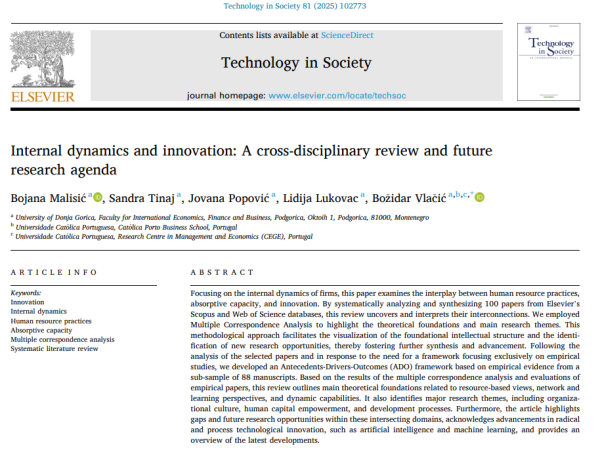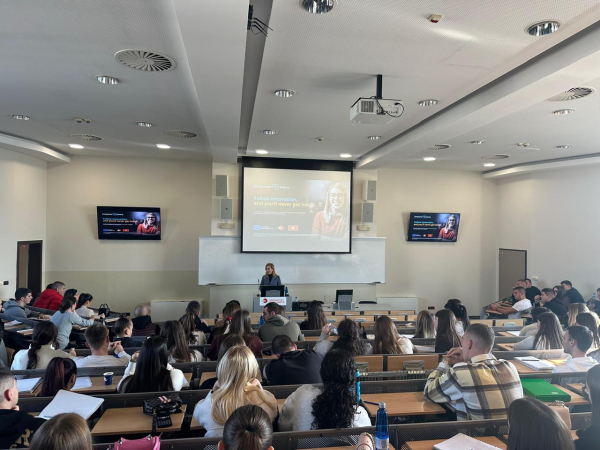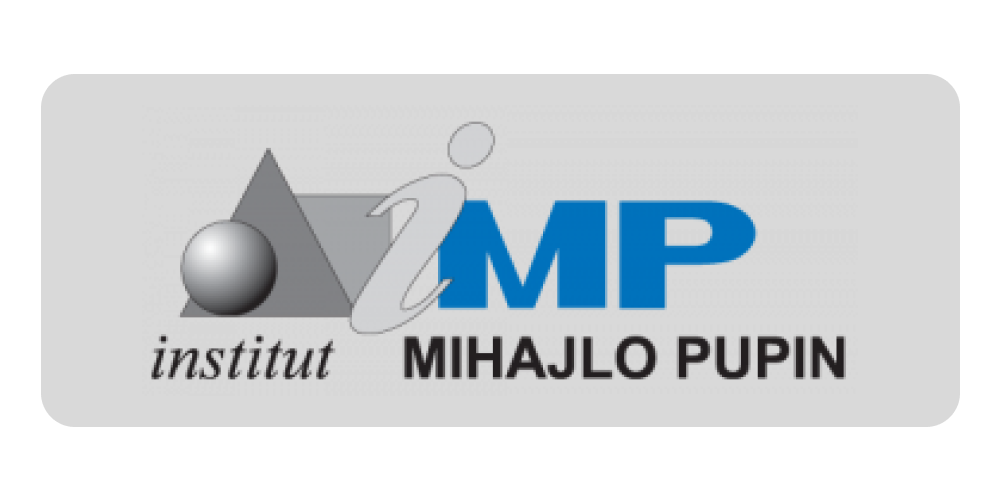Research team Assoc. Sandra Tinaj, Ph.D., Bojana Mališić, Ph.D., Lidija Lukovac, M.Sc., Jovana Popović, M.Sc., and Assoc. Dr. Božidar Vlačić from Catolica University from Portugal, published a scientific paper as one of the results of this project.
One of the results of this project is a scientific paper published in the prestigious and respectable magazine (Q1) Technology in Society, which is in the top 25 worldwide. The title of the paper is Internal Dynamics and Innovation: An Interdisciplinary Review and Future Research Agenda.
This paper provides a comprehensive analysis and overview of the internal dynamics of firms focusing on the relationships between management of human practices, absorptive capacity and innovation.
Through a systematic analysis of the original 506 papers from the Web of Science and Scopus databases, 100 scientific papers were selected for further analysis, which indicate how these elements (human resource management, absorptive capacity and innovation) are interconnected and influence each other. The methodology included the use of multiple correspondence analysis (Multiple Correspondence Analysis) to clarify the theoretical foundations and key research themes, mapping the identification of new directions for research.
A new framework (ADO framework – Antecendence – Drivers – Output) - "Factors-Drivers-Consequences" was also presented, which was derived from empirical studies with the aim of connecting theoretical insights with practical applications by analyzing 88 specific works that included questionnaires, case studies and the like).
Key findings include the recognition of core theories in the work such as the resource-based view, networking, dynamic capabilities, along with the identification of significant themes such as organizational culture, human capital empowerment, and development processes. The work also points to existing research gaps, particularly related to the impact on the creation of radical innovations and process innovations, including technologies such as artificial intelligence and machine learning.
This paper not only synthesizes the existing literature, but also lays the groundwork for future research aimed at advancing understanding of these interconnected domains.
You can read the paper at the following link.










